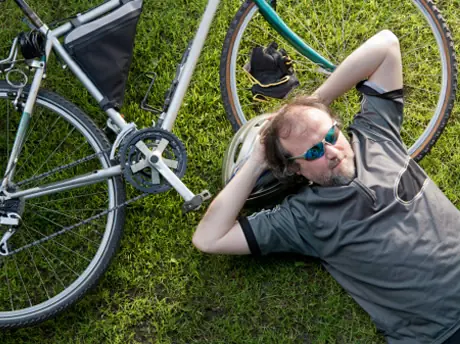
The question "How fast do I lose fitness when I stop training?" usually comes when cyclists experience illness or an injury that forces time away from training. The other time they ask this question is at the end of a race season when most coaches recommend athletes taking a break from normal training routines.
A decrease in training typically follows three paths that include complete bed rest, doing normal activities without any training or a reduction in training volume and/or intensity.
For this two-part column series, let's focus on taking time off at the end of a competitive race season without injury and without complete bed rest. We will focus on intentional, planned time off—the recovery phase of training periodization.
More: 4 Offseason Cycling Tips
For some athletes, the recovery phase means doing all normal activities except athletic training. For others, recovery means a reduction in training volume and intensity. A third set of athletes may alter volume, but intensity remains as a matter of switching sport activities. An example is when cyclists switch to Nordic skiing. Know that even two-sport athletes will take a recovery phase of some type between sport seasons.
Lost Fitness
When training volume and intensity is significantly decreased or eliminated for long periods of time, compared to prior weeks, fitness is lost. How much fitness is lost and how fast the losses occur depend on many factors, some of which include:
- The volume of training that remains during the time of decreased training.
- The amount of training intensity that remains in the schedule.
- The total length of time the athlete has been fit and training.
- The amount and type of cross training included in the recovery.
- The age of the athlete.
More: Should Cyclists Run in the Offseason?
Training Ceases, Normal Activities Continue
Researchers took a look at seven highly-trained athletes who were either cyclists or runners. These athletes trained for at least 10 to 12 months, five days per week at some 70- to 80-percent of VO2 max. In the experiment, 57 sedentary control subjects were used as comparison.
Researchers looked at physiologic measures that included oxygen consumption, heart rate, cardiac output and cardiac stroke volume. They took muscle biopsies of left gastrocnemius (on the runners) and vastus lateralis (cyclists).
The trained athletes stopped doing athletic training and limited physical activity to the minimum required for their jobs. They also walked less than 500 meters per day.
- 1
- of
- 2
About the Author









Discuss This Article